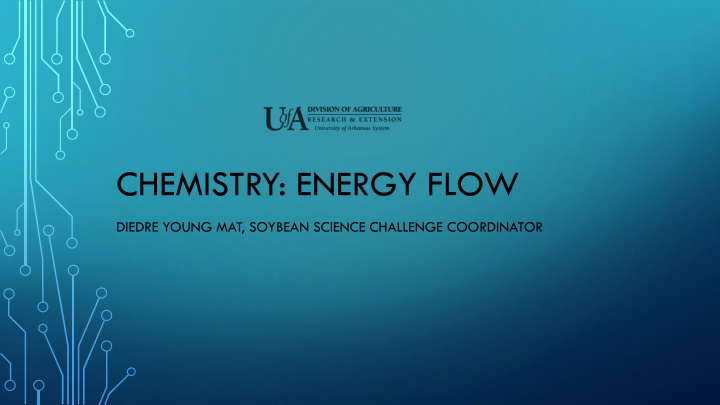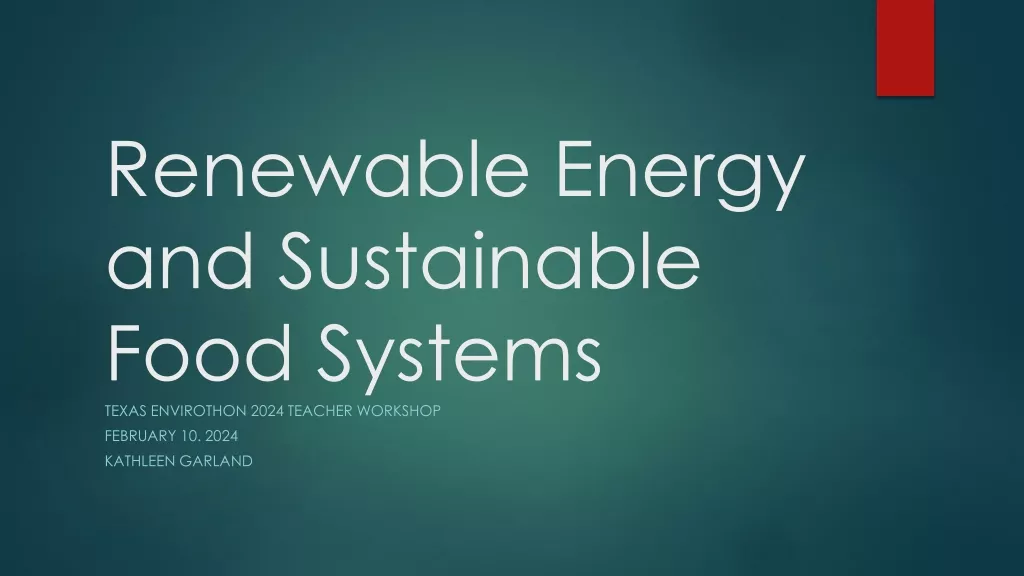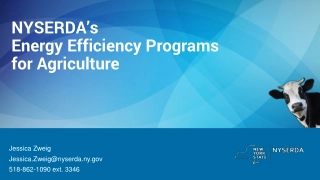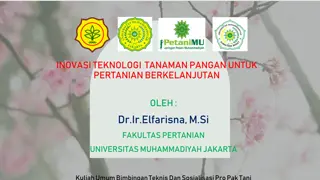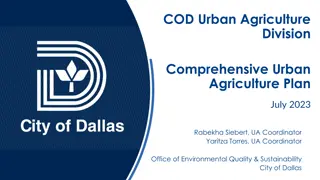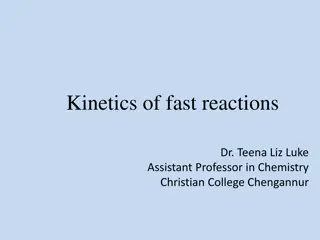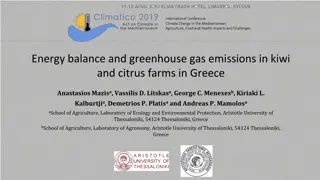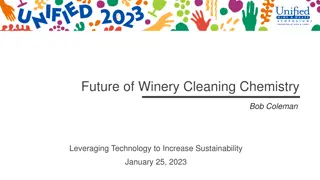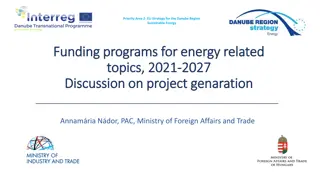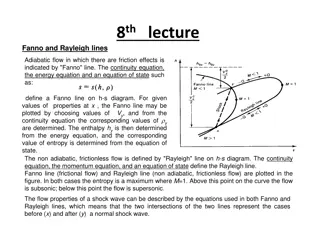Chemistry Energy Flow in Agriculture: Sustainable Solutions
Addressing water pollution and nutrient management in livestock farming through chemistry-based approaches enhance sustainability. Farmers are implementing innovative practices to reduce environmental impact while increasing food production.
Download Presentation

Please find below an Image/Link to download the presentation.
The content on the website is provided AS IS for your information and personal use only. It may not be sold, licensed, or shared on other websites without obtaining consent from the author.If you encounter any issues during the download, it is possible that the publisher has removed the file from their server.
You are allowed to download the files provided on this website for personal or commercial use, subject to the condition that they are used lawfully. All files are the property of their respective owners.
The content on the website is provided AS IS for your information and personal use only. It may not be sold, licensed, or shared on other websites without obtaining consent from the author.
E N D
Presentation Transcript
CHEMISTRY: ENERGY FLOW DIEDRE YOUNG MAT, SOYBEAN SCIENCE CHALLENGE COORDINATOR
NGSS STANDARDS Topic 3: Energy Flow CI-ESS3-4 CI3-ETS1-1
EVALUATING TECHNOLOGICAL SOLUTIONS THAT REDUCE HUMAN IMPACT, LOCALLY AND GLOBALLY Farmers are using the latest technology in agriculture to decrease water usage, protect local waterways and still increase food production. This involves using chemistry to determine water purity, soil health, and ecological impact.
AGRICULTURES IMPACT ON NATURAL SYSTEMS Water is an excellent solvent which means it will dissolve animal waste. This means, waste will be incorporated into any standing water or water runoff on an animal farm. As water evaporates, it leaves high levels of waste behind. Rain will move this waste either to local waterways or into the ground to areas of high levels.
WATER POLLUTION ON BEEF AND POULTRY FARMS Water contamination from beef and poultry manure can cause eutrophication of local waterways, hypoxia and pollution downstream as far as the Gulf of Mexico as polluted water enters streams and rivers. Polluted water can damage local wildlife and aquatic environments. So how do farmers stop pollution and still maintain a working farm?
WATER CONSERVATION ON BEEF AND POULTRY FARMS: USING CHEMISTRY TO HELP SOLVE THE POLLUTION PROBLEM. Farmers have been blamed for current pollution conditions in local waterways. In reality, farmers are actively working to keep excess nutrients on the farm to be used and recycled and out of our ecosystem. Keeping and processing excess nutrients on the farm means more plant biomass for cattle, less excess nutrient handling and storing, plus no off-site processing. Daily soil and water chemistry testing help farmers to use real-time methods for conservation.
WHAT CONSERVATION PRACTICES ARE FARMERS DOING ON THEIR FARMS? SOLVING PROBLEMS BY ENGINEERING. Fertilizing evenly: By spreading excess nutrients throughout the farm area, build-up is eliminated, and nutrient retention is accelerated. Grassed Waterways: Grassed waterways reduce nutrient load as water is filtered by both the surrounding grass (before it reaches the pond) and by the water itself. Nutrient Ponds: Nutrient ponds break down excess nutrients. This water is in turn recycled back onto the farm as irrigation or as watering for local livestock. Aerating Soils: By adding aerator holes to the soil, water runoff is quickly absorbed, and nutrients are spread more evenly through the soil.
FARMERS AND RESEARCHERS: WORKING TOGETHER TO SOLVE PROBLEMS WITH SOLUTIONS THAT WORK FOR BOTH SIDES. On site real-time chemical monitoring of soil and water quality to determine changes needed. Education by local researchers on the latest conservation methods. Stream bank restoration on farmlands. Controlled burns to reduce organic loads and increase water infiltration. Funding to protect local waterways. Farmers teaching farmers best conservation practices. Involving producers in the solution. Educating policy makers. Engaging the non-farming sector.
SO HOW IS THIS AFFECTING YOU AND ME? Grassways, ponds and aerators are needed to keep nutrients on the farm and not in the water. Local watersheds meet the needs of our drinking water supply. By keeping nutrients on the farm, nearby watersheds are kept free of algal blooms, sediments and organics. Working together, we can protect our water resources and adequately irrigate crops. A win-win for all!
WATCH THIS YOU TUBE VIDEO ABOUT WHAT IT S LIKE TO BE A SOIL SCIENTIST! https://www.youtube.co m/watch?v=QV4dxHrvx p8&list=PL7B61381EE04 38243&index=38
